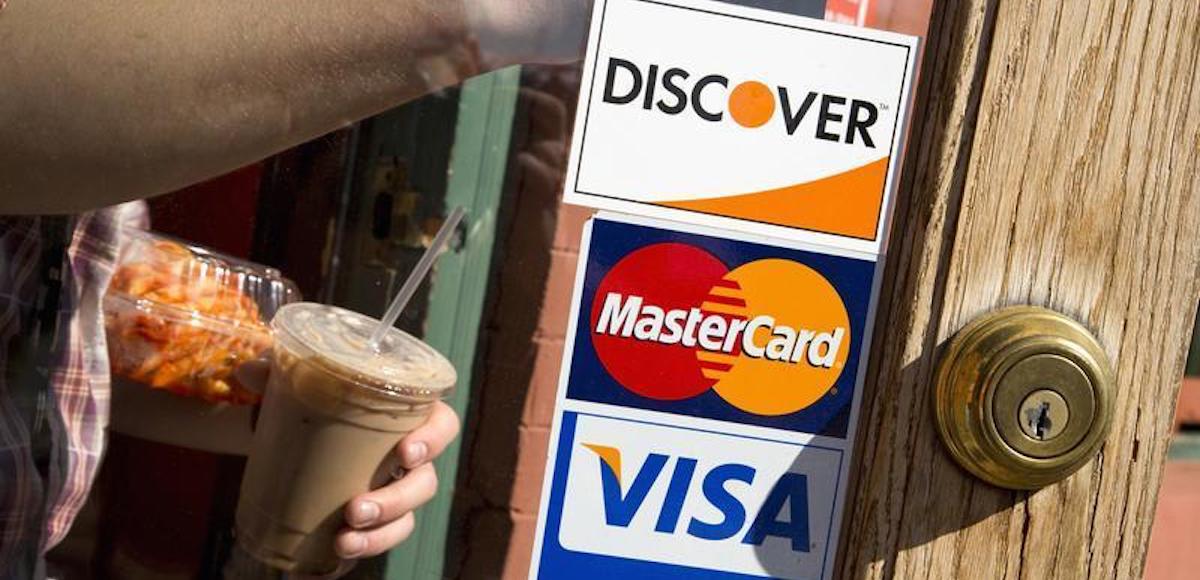

A coffee shop displays signs for Visa, MasterCard and Discover, in Washington, May 1, 2013. (Photo: Reuters)
U.S. consumers added another $92.2 billion in credit card debt during 2017 and outstanding balances surpassed $1 trillion for the first time ever, according to WalletHub’s latest Credit Card Debt Study. That’s the most for a single year since 2007 and 105% above the post-recession average.
Only 4 times in the past 30 years have U.S. consumers spent so much in a year, which might sound like a net positive for consumer spending and gross domestic product (GDP). But worth noting, in each of those four years, the charge-off rate – currently hovering near historical lows – increased the following year.
The $67.6 billion in credit card debt U.S. consumers added in the fourth quarter (Q4) of 2017 is the highest quarterly accumulation in the last 30 years. It’s also 68% higher than the post-Great Recession average.
| Q4 2017 | Q4 2016 | Percentage Change | |
| Average Credit Card Debt per Household | $8,600 | $8,131 | +6% |
| Total Credit Card Debt | $1008.5 billion | $950.20 billion | +6% |
| Quarter Net Increase | $67.6 billion | $58.20 billion | +16% |
The average credit debt per household rose 6% to $8,600, which is $138 higher than the level WalletHub identified as being sustainable. Total credit card debt also rose 6% to a total of $1,008,500,000.00, up from $950,200,000,000.00 in Q4 2017.
The research study is based on Federal Reserve data released Wednesday afternoon.
The most damning journalistic sin committed by the media during the era of Russia collusion…
The first ecological study finds mask mandates were not effective at slowing the spread of…
On "What Are the Odds?" Monday, Robert Barnes and Rich Baris note how big tech…
On "What Are the Odds?" Monday, Robert Barnes and Rich Baris discuss why America First…
Personal income fell $1,516.6 billion (7.1%) in February, roughly the consensus forecast, while consumer spending…
Research finds those previously infected by or vaccinated against SARS-CoV-2 are not at risk of…
This website uses cookies.